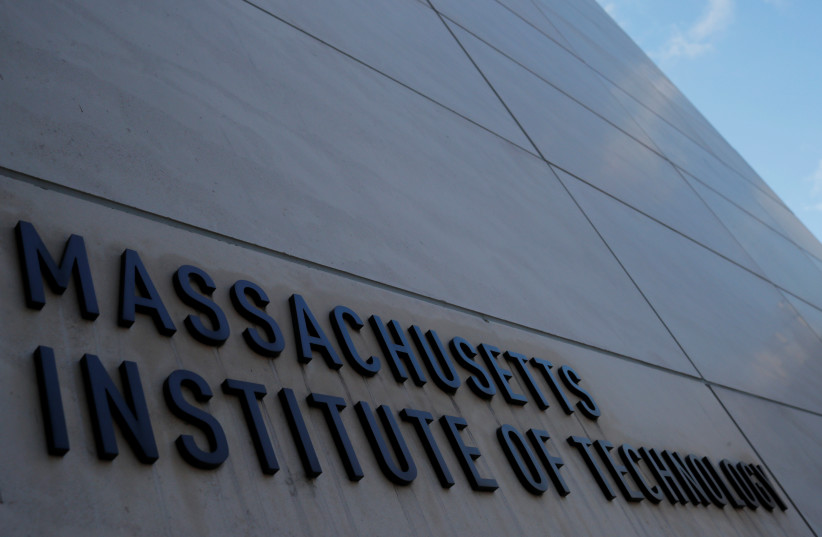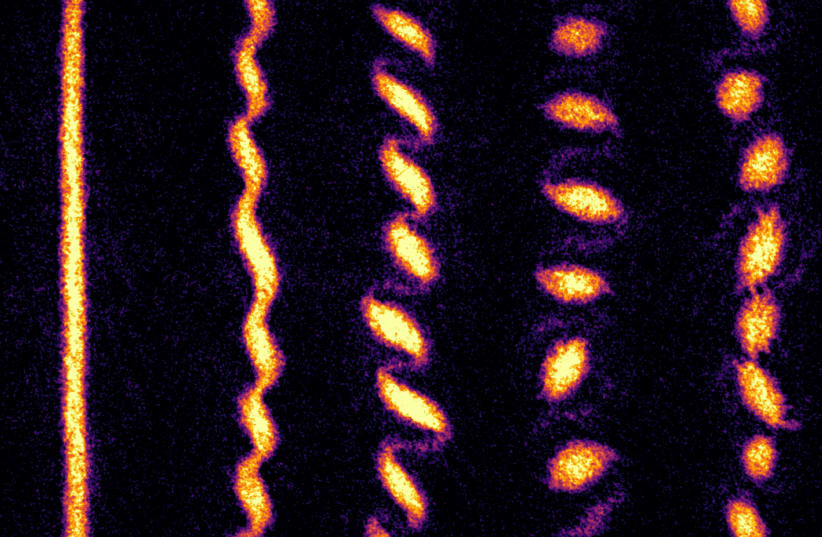Physicists at the Massachusetts Institute of Technology succeeded in recording how a cloud of ultracold atoms formed "quantum tornadoes," showing the crossover from the classical physics that we see in the macro world to quantum physics, which we have only observed in the micro world.
In a peer-reviewed study published in Nature on Wednesday, the physicists managed to view particles interacting purely due to quantum mechanics by observing a spinning fluid of ultracold atoms. Researchers have predicted that such interactions will dominate in a rotating fluid, causing the particles to exhibit never-before-seen behaviors.
The researchers took a cloud of about 1 million sodium atoms and cooled them to just above absolute zero at about 100 nanokelvins (-273.149 Celsius) in order to try and get them to behave like electrons in a magnetic field.
In the 1980s, physicists observed a new family of matter called quantum Hall fluids, which consist of clouds of electrons floating in magnetic fields. While classical physics predicts that these electrons would repel each other and form a crystal, the particles instead adjust their behavior to what their neighbors are doing in a correlated, quantum way.
“People discovered all kinds of amazing properties, and the reason was, in a magnetic field, electrons are (classically) frozen in place — all their kinetic energy is switched off, and what’s left is purely interactions,” said Richard Fletcher, assistant professor of physics at MIT, to MIT News. “So, this whole world emerged. But it was extremely hard to observe and understand.”


The MIT physicists took the cloud of ultracold sodium atoms and used a system of electromagnets to confine them and then collectively spun the cloud around at about 100 rotations per second while capturing footage of the spinning cloud.
The researchers found that after about 100 milliseconds, the cloud spun into a long, needle-like structure. They then took matters one step further, taking the cloud past the point when the effects of classical physics should be suppressed, leaving only the interactions between the particles and quantum laws.
Eventually, a quantum instability kicked in, causing the needle to waver, then corkscrew and finally break apart into a crystalline string of rotating blobs similar to miniature tornadoes, purely from the interplay of the rotation of the gas and forces between the atoms.
“This evolution connects to the idea of how a butterfly in China can create a storm here, due to instabilities that set off turbulence,” explained Martin Zwierlein, the Thomas A. Frank Professor of Physics at MIT. “Here, we have quantum weather: The fluid, just from its quantum instabilities, fragments into this crystalline structure of smaller clouds and vortices. And it’s a breakthrough to be able to see these quantum effects directly.”
Zwierlein added that the effect was similar to the Coriolis effect that explains how patterns such as spiral clouds emerge as an effect of Earth's rotation.
Biswaroop Mukherjee, Airlia Shaffer, Parth B. Patel, Zhenjie Yan, Cedric Wilson, and Valentin Crépel, all affiliated with the MIT-Harvard Center for Ultracold Atoms and MIT’s Research Laboratory of Electronics, were co-authors on the study.
In June, physicists from two independent teams reported in Nature the most direct experimental observations of crystals made from electrons, known as Wigner crystals, yet.
Wigner crystals had been elusive because electrons don't act like the macro world does. Unlike water which crystallizes when cooled down, electrons behave like waves due to quantum mechanics and begin to slosh around and crash into their neighbors when cooled down, instead of crystallizing, according to Quanta magazine.
Researchers in a group led by Hongkun Park at Harvard University found that a "sandwich" of two very thin sheets of a semiconductor cooled to below -230 degrees Celsius with a specific number of electrons in each layer resulted in a Wigner crystal. Repulsive forces between the electrons in each layer and between the layers worked together to arrange the particles into a triangular grid, preventing the usual sloshing.
